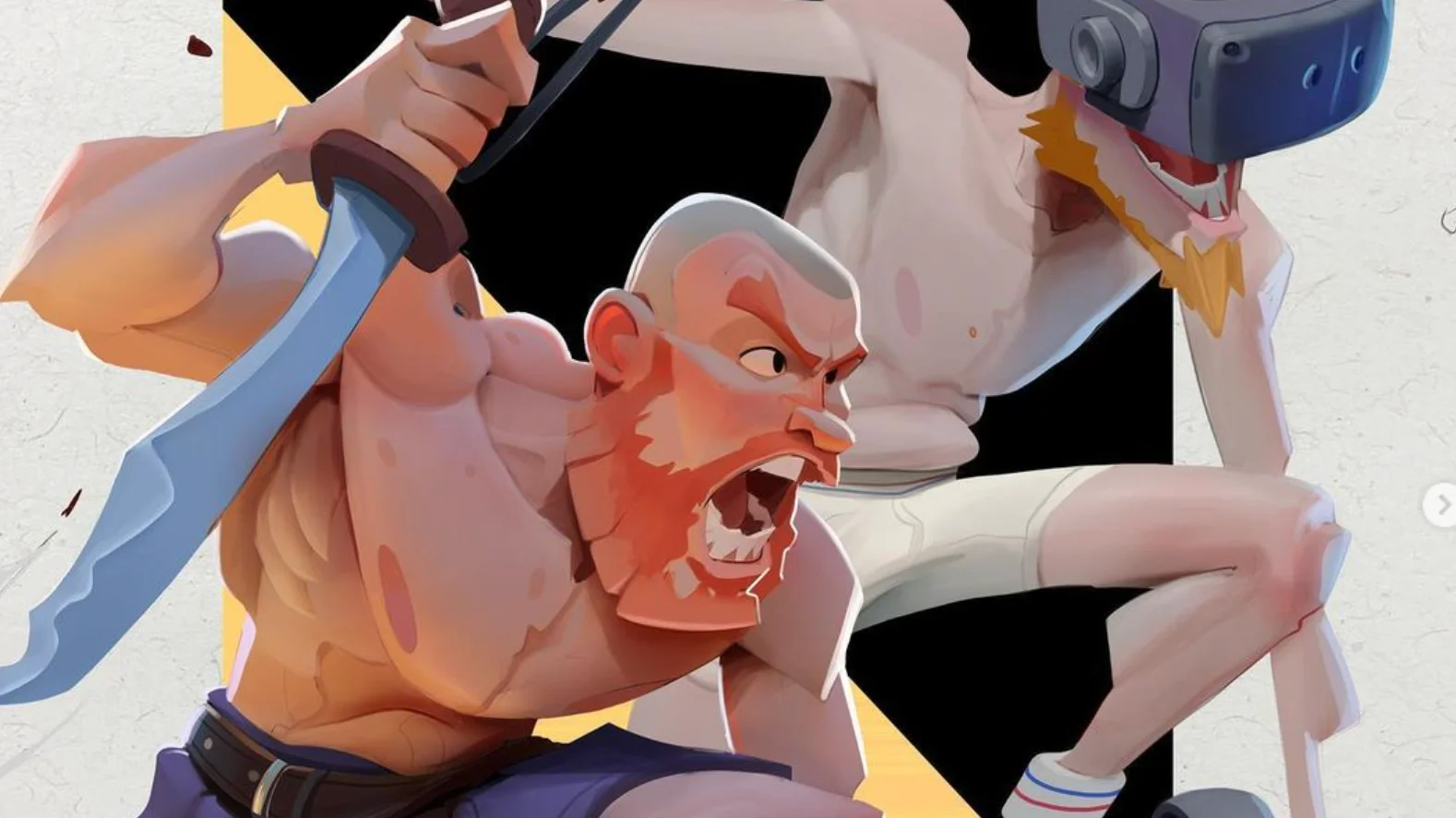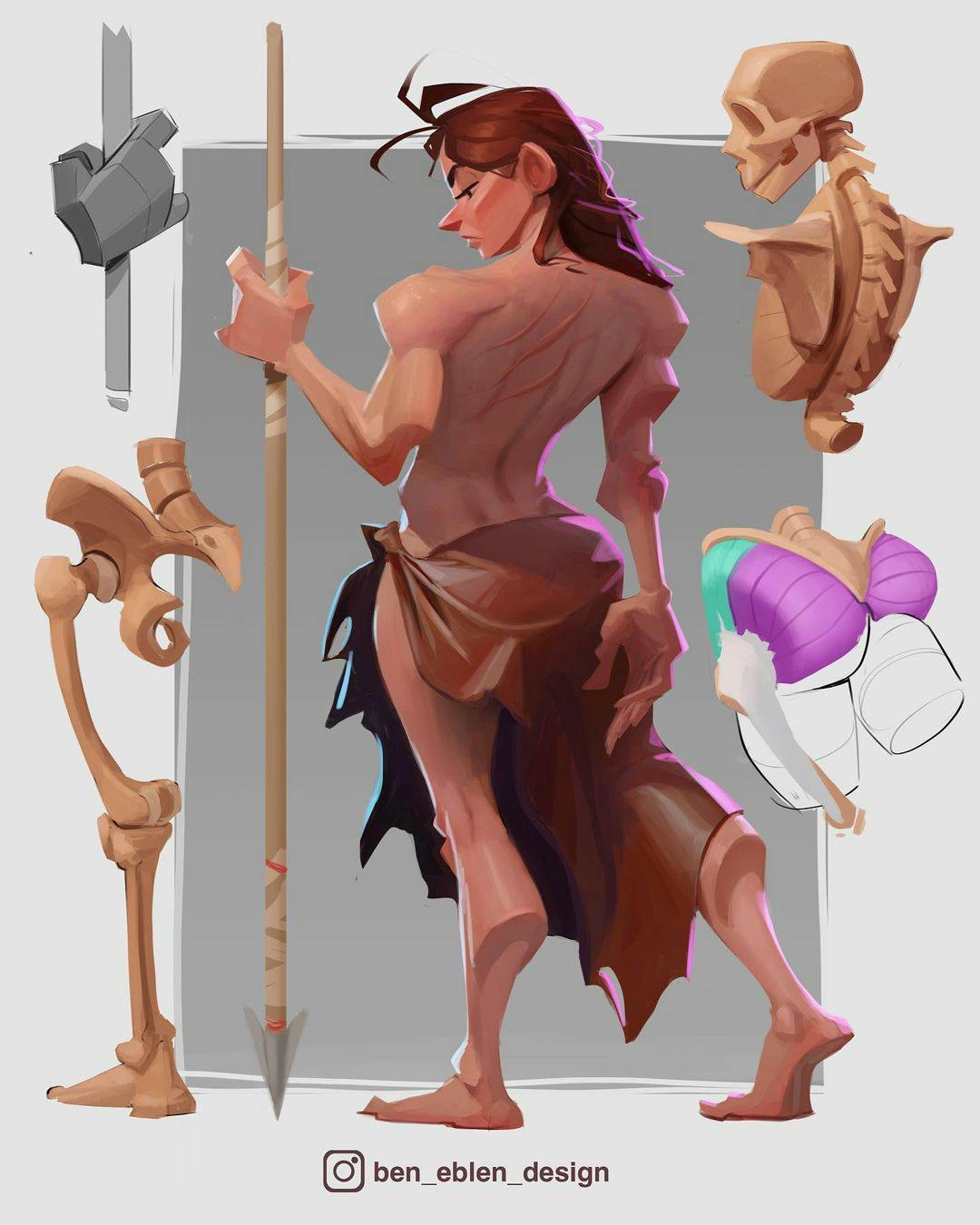
Notes on Stylized Character Design
I like drawing, painting and sculpting mostly stylized stuff; but it hasn't always been that way.
For most of my life I was stuck in realism land, copying reference as closely as possible. I had no idea how someone could just 'come up' with a character, world, or object from their head, let alone adding an appealing style to their work and shapes.
The following is a living post, where I'll be throwing little tid bits, thoughts and resources I've found useful on my journey to getting away from realism and into stylized character art.
Staying on model

'Staying on model' means to keep the character consistent through each drawing you do, it's most often used in animation, comic books or anywhere a character, object or place needs to be shown in different scenarios.
I found it pretty tricky to find info on how to get better at staying on model, but these are the few things I did find + some experiments of my own.
Character Sheets

So far I've found that character sheets and model turn arounds are a great way to keep a character on model.
They allow you to visualise the character from front, side, back and 3/4 views which gives you a lot of information to then draw them in different angles.
These are also what a lot of 3D artists use to model their characters as well.
Although character sheets are super helpful, I don't think they should be done first, I think you've got to keep it loose and find the character first before going into this stage.
A way I've experimented with charatcer sheets is to...
- Starting with a front view
- Then move onto the side view
- With front and side views, you then have the information to accurately continue with the 3/4 view
- The the back view if needed
It can definitely seem daunting to try and accurately rotate a character in 2D but here's a couple of tips that have helped me recently.
1. Keeping the shapes simple
It's much easier to draw and rotate simple, geometric shapes in space, rather than shapes with a bunch of detail.
2. Drawing guide lines across the character

These types of character sheets I find are less... 'artistic?' and more technical. They feel more like what an industrial design would create for a physical product (which I guess is what were doing right?).
The guidelines help me keep everything aligned and making logic sense.
3. Thinking about features abstractly

When trying to get a likeness of someone, but also keep it stylized, I've found one of the best ways to do this is to think about the features/charactaristics abstracly vs relying so heaving on reference material.
Being really relyant on reference photos when trying to stylize runs the risk of it transforming onto a stylistic no-mans land, where it's kind of realistic, kind of stylized, and it kind of looks like the person.
For example, this Travis Barker stylization had me frustrated for ages, until I started to think about the characteristics vs the features in isolation on a piece of reference.
I took a step back and tried to simplyfy my thinking with observations like...
- He has deeper set eyes
- His eye sockets are pronounced
- He has clear, pronounced eye lids
- His eyes are a little sleepy
- He has a pronounced filtrim
- His eyebrows arch, up at the corners
- His lips are pouted slightly
- His cheeks suck in
Using these observations as ammo, I can go ahead and start inventing shapes that best represent these charactersitics.
and breaking them down into really simple shapes can help as well.
Staying on model resources
- How do animation studios maintin consistent drawings?
- A great live stream on how to start on model by Michael Mattessi
Style and Stylisation

Stylisation is a tricky word. It can mean many things from slightly caricaturised to a full on anime looking illustration.
Because it's such a broad term, I like to think about what other artists inspire me and the decisions they make to solve different problems.
To me, 'style' is all about different ways to solve different problems. Where one artist might choose one way to solve how to draw the eye, another artist might choose a completely different way.
A few artists I really love for their styles are...
- Shiyoon Kim - Disney Style
- TB Choi - Beautiful line-work
- Max Grecke - Amazing shape language
- Jin Kim - Disney Style
- Hicham Habchi - Beautiful line-work & character design
How I'm developing my style
Don't just steal from one of your heroes, steal from all of them
Is a great little quote by Austin Kleon in Steal Like an Artist - 10 Things Nobody Told You About Being Creative and is pretty much how I'm developing my style.
Now I'm not just doing a couple of copies and calling it a day... no, no, no. I'm looking to "understanding the why" behind what they're doing and try to reverse engineer what, why and how their making their decisions and executing on them.
Take TB Choi for example. I Absoultely love her line-work, especially the really distinct drop shadows she puts in.
I'll take a bunch of her work that she's done, and break it down to see where she makes her decisions. I'll ask myself things like...
- Is there a pattern to these drop shadows?
- Why does she put them there?
- Is this something she always does, or is it only in certain scenarios?
This is only a small example of something I do from line-work to rendering on all my favourite artists work.
Character research

This was an interesting idea that came up during one of Michael Mattesi's live streams and it was the idea of thinking about the character a little bit deeper than just "This looks cool".
For exmple, these characters live lives in these imaginary worlds we're creating, so how would their bodies react to their lifestyle?
Asking things like...
- What does this character do in their life?
- What are their hobbies?
- What's their job?
- What kind of things/activities do they find valuable?
By asking these questions, you can start to think about how their physiology may reflect that of their lifestyle. For example...
- Bike riders might have larger thighs
- Power lifters would have larger body mass
- Sprinters would be a little more lean
- Couch potatoes may be a little more...rotund
You get the idea.
These are some questions that I want to explore more as I delve into creating characters of my own.
Expressions

Characters can express themselves in many different ways.
Your first thought might be that 'expression' is just about the face.
But once you start to take the whole figure into account, you can start to see how the body can express itself as well.
Facial Expressions
A few key areas I've found that are able to produce the most expression are...
- The mouth
- The eyes
- Take special note of the lids (particularily the lower lid)
- The eye brows
Figure Expressions
There was a great post by Griz and Norm that simply stated "More acting, less anatomy" -> Heres the IG post
Hands

Another highly underrated part of the body that can express itself is the hands.
Hands can depict a great deal about a person like...
- Age (notice how 'nobbly' the knuckles above are, depicting maybe a little bit of arthritis)
- Weight
- Gender
- Profession
Let alone the pose of the hand giving even more information about a character, or the situation a character might be in.
The hands also have a gesture to them. Where a more femanin hand might have a little more 'flow' to it, a more masculine hand might feel more structural or sturdy (these ofcourse are generalities)
Although hands aren't as recognised as something that gives someone 'expression', I've found that they on par with the importance of the figure in telling a story and depicting the character.
Other Resources
🙋♀️ People Mentioned
- Shiyoon Kim - Disney Style
- TB Choi - Beautiful line-work
- Max Grecke - Amazing shape language
- Jin Kim - Disney Style
- Hicham Habchi - Beautiful line-work & character design
- Griz and Norm
- Michael Mattesi
- Ethan Becker
- Austin Kleon
🎥 Videos
- Michael Mattesi Character Design Live Stream
- Great hidden Gem on Youtube Phils Design Corner
- Colouring Characters - Prepping Characters for color
- Silouette - Silhouette Design
🧠 Courses
📸 Reference image resources
- art of animation reference images (AWESOME)
- These characters and expressions are awesome from 'Masters of Anatomy'